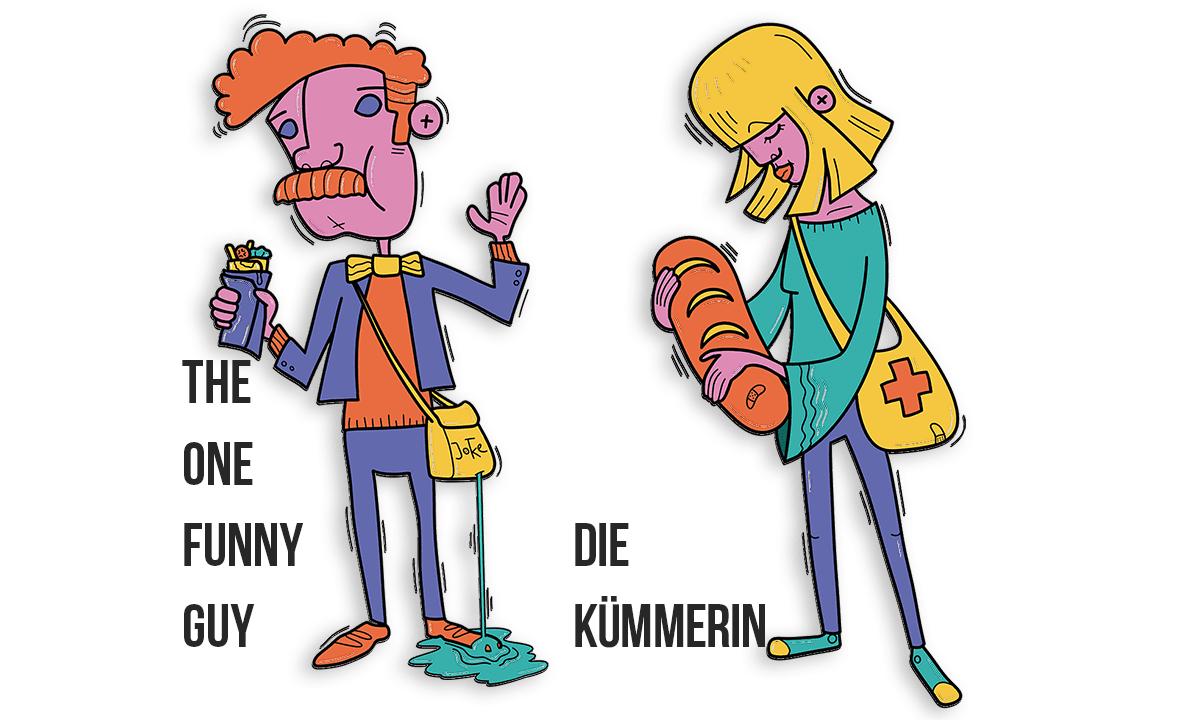One year of Gisler Protocol: Men are funny and active - women are pretty and quiet
Just in time for International Women's Day, the Gisler Protocol celebrates its anniversary. Already 50 agencies have joined the initiative on the multi-faceted representation of gender in advertising. Now there is a stereotype analysis.

To mark the anniversary of the Gisler Protocol, the initiative conducted a stereotype analysis of 149 moving image ads from Switzerland in 2021. The focus was on the presence and portrayal of men and women. The source of the analyses were all advertisements that were communicated via industry media in 2021 and featured moving image content. Regardless of whether the commercials were designed for TV or for online playout. The 10 gender stereotypes identified by the Gisler Protocol served as the grid for the stereotype analysis. This includes six male and four female stereotypes.
The six male stereotypes
The one funny guy: The funny one. The character head. Doesn't take himself too seriously, but that's exactly why he's to be taken seriously. That's why he plays the leading role and can afford to make fun of himself.
3 dudes having fun: Three men who experience something. Friends for life, bros or just random... men. Very popular in Switzerland because of our three (four) national languages. Women? Would only disturb the fun.
A true hero: Like Odysseus, our hero fights his way through all adversity, but of course succeeds heroically in the end. Gladly, the true hero is also a well-known athlete. We are impressed. What a man. Can women do the same? Are women also famous athletes? Hard to imagine...
The master at work: The master - gladly 50+ - has great expertise. In matters of chocolate, calcified sinks or cheese. Only he knows how to do it right. He doesn't even have to say much, his masterly aura alone inspires the greatest respect.
Mr. Mainsplainer: Like the "master at work", our Mr. Mansplainer has great expertise in his ancestral field. And is usually over 50. Unlike the silent master, Mr. Mansplainer is very happy to explain the world to us. After all, we don't really know where we're going ourselves.
A man's gotta do what a man's gotta do (grill, sweat): A collection category for everything that men do. And only them. They steer cars skillfully, grill to perfection and sweat manly.
The four female stereotypes
The Caretaker: She cares. For children, animals, calcified coffee machines. Gladly in profile, since she has to turn her attention to something or someone. She can't say much, she's busy taking care of herself.
The quiet connoisseur:Unbelievable how creamy this yogurt is. This immediately leaves the quiet connoisseur speechless. Which is why she just continues to silently enjoy her chocolate (but not too much!), her yogurt (preferably low-fat and low-sugar) or just the moment.
The Räklerin: Fortunately, an almost extinct category. Except in perfume and cosmetics advertising. There the Räklerin still enjoys great popularity. Always with her mouth half-open, a moan on her lips, she lolls lasciviously in front of perfume bottles, mascaras or anti-wrinkle creams. Speak? Would only destroy the moment.
The cool girl: The Cool Girl is not like any other typical woman. The Cool Girl likes to eat burgers, play soccer, swear and is also otherwise just as cool as a man and not as conservative as a woman. The Cool Girl likes to be a bit more "edgier" on the outside and thus shows her crazy character to the outside world.
The quantitative results
Women appear in 115 ads, 44 times they also speak, men appear in 125 ads, 52 of them speak. 95 male and 53 female stereotypes appear in total. This shows that men are stereotyped more often than women.
By far the most popular male stereotype (appearing 45 times) is "the one funny guy". The collective category "a man's gotta do what a man's gotta do" follows at some distance in second place. The most popular female stereotype is "the cool girl" (18), followed in second place by "the caretaker" (14). In two of the ads analyzed, a man explicitly takes care of a child, and in two, a father rides in the car with the child, thus assuming fatherly duties. In 49 advertisements that featured men and/or women, stereotyped representations were not applied. In 40 of the analyzed advertisements one stereotype occurred, in 36 advertisements two or more stereotypes.
The key findings
The following findings emerge from the qualitative analysis: The discussion about clichés and stereotypes in advertising is not only about the portrayal of women - the portrayal of men is just as stereotyped, if not more so. However, it turns out that male stereotypes are more positively afflicted. Men are funny (one funny guy), educated (Mr. Mansplainer), or active (a man's gotta do, what a man's gotta do). Therefore, the image of men, even if stereotypical, has more positive connotations overall.
Women are less often portrayed in active roles. In these cases, ads often fail the "potted plant test" of the Gisler Protocol, which tests whether women could be replaced by a potted plant in a story without the story suffering. The accumulation in the female stereotype "The cool girl" shows the efforts of the industry to break the stereotyped image of women. Time and again, however, this tendency then spills over into another extreme and the fact that a woman is multifaceted and also sometimes does things that are not considered feminine per se (drinking beer, maintaining friendships with men, playing soccer) are moved to center stage. This in turn leads to a stereotyped portrayal.
The gender gap is relatively pronounced among influencers (mostly female) and professional athletes (mostly male). Off-voices that explain something are also mostly male. Men are thus still more likely to be perceived as the gender that can and should explain something.
Women are more often portrayed in relation to a counterpart. As part of a couple, for example as a mother. Men, on the other hand, more often have roles without external role attribution.
Sensitization and awareness
The aim of the analysis is to enrich the discussion about the stereotyped portrayal of gender in advertising and communication with quantitative data and thus to raise awareness about the topic. The occurrence of stereotypes in advertisements does not automatically say anything about their quality. It is the sheer quantity and unreflected use that make stereotyped representations a problem.
The Gisler Protocol focuses its awareness-raising work primarily on the gender binary, hoping to support awareness-raising on all other facets of the diversity spectrum as well.















